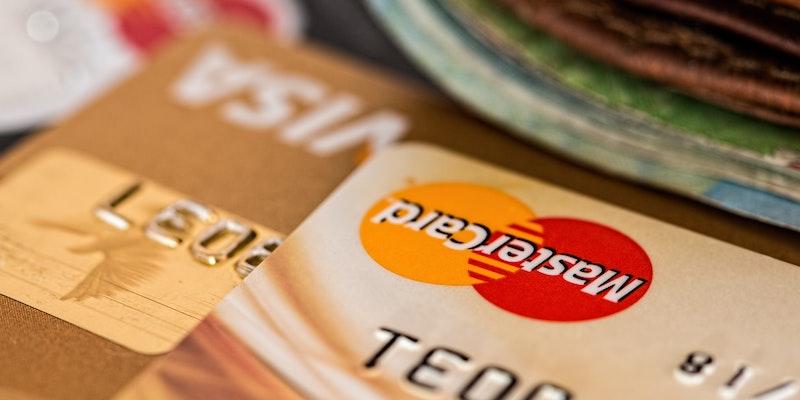
Every bank client knows the sinking feeling of seeing their account balance dip perilously low. The looming danger of over-drafting and its associated costs is a reality many of us would prefer to avoid. Thankfully, banks offer a buffer against this risk: overdraft protection.
What is Overdraft?
Going into overdraft happens when withdrawals exceed the funds available in a checking account, plunging the account into negative territory. Historically, an overdraft means banks impose significant charges.
To put this into a real-world scenario, let's consider an instance where you splurge on a $5 coffee, forgetting there's only $2 left in your account. If your bank offers overdraft protection, they might allow this transaction to go through, safeguarding you from the embarrassment of a declined payment.
However, convenience often costs. Your account may be charged $35 for overdraft protection. On the good side, several banks with overdraft protection cap these fees, preventing financial ruin. These costs might add up quickly if you make several transactions that need more funds. Financial institutions sometimes limit daily costs to four.
What is Overdraft Protection?

Many financial institutions have introduced overdraft protection to combat the repercussions of unintentional overdrafts. When you activate this service, your bank ensures that the necessary amount is pulled from a linked secondary account in cases of insufficient funds. This could be a savings account, another checking account, or even certain credit cards or lines.
For example, some banks with overdraft protection will charge a smaller fee for this automatic transfer service. Say Bank A charges $12 for each transfer from a connected savings account as part of their overdraft protection. That's substantially less than a typical $35 overdraft fee. There are even instances where if the transfer amount is minuscule (like less than $1), the bank won't charge you at all. It's like having a safety net for your finances.
Finding the Right Bank for Overdraft Protection
It's no secret that banking fees can quickly drain your finances if you're not careful. Overdraft fees, in particular, are notorious for their hefty costs. But there's a silver lining: many banks have stepped up their game, offering programs to help customers avoid these fees. And when it comes to searching for banks with $500 overdraft protection, the details truly matter.
When weighing options among banks with overdraft protection, it's not just about which ones offer the highest protection limits. Check the fine print. Capital One 360 Checking® Account is notable for its overdraft protection and account versatility. With them, you get:
- Auto-decline: This function ensures any transactions that would put your account in the red get automatically declined, keeping you from accruing extra charges.
- Free savings transfer: Go below zero? No worries. Capital, one transfers funds from your linked savings or money market account without charging a dime.
- Next Day Grace: Overshoot your balance? Capital One offers a buffer. Rebuild your balance before the end of the next working day. Otherwise, fees apply.
Making Overdraft Protection Work for You
Money management can be tricky. Sometimes, we need to catch up despite our best efforts. So overdraft protection kicks in. Its usefulness depends on how you utilize it, like any instrument. Maximize protection without risking pitfalls using this method.
Regular Balance Checks
It seems apparent, yet how many people need to check their bank accounts periodically is astounding. Make this a habit to stay informed and avoid overdrafts. Today, mobile banking is a tap away.
Set Alerts
Don't rely solely on your memory or manual checks. Use technology to your advantage. Most banks and credit unions have features that send alerts when your balance dips below a specified amount. It's a proactive way to stay ahead.
Understand Your Bank's Terms: Each bank has its own set of rules. Knowing potential overdraft protection fees and associated charges can save you from unpleasant surprises.
Research and Compare
Competition is fierce among banks with overdraft protection. So, do some shopping. While some might have overdraft protection fees, others offer the service free. A little research can lead you to a deal best suited to your financial habits and needs.
Consider Opting Out
You tried it, and it's not your cup of tea. That's okay. Banks offer the option to deactivate the service. Ensuring that any financial tool or service you use aligns with your personal finance strategy is essential.
The Benefits of Overdraft Protection
Overdraft protection is more than just a financial tool; it's peace of mind. When unexpected expenses hit, the last thing anyone wants is the added stress of a declined transaction or accumulating steep fees. Overdraft protection provides several key advantages:
- There’s nothing quite as unsettling as having your card declined, especially during significant transactions. With overdraft protection, your bank ensures that purchases go through, even if funds are momentarily short.
- While there might be an overdraft protection fee, these charges are often far less than standard overdraft fees. For instance, shifting money from a linked savings account might incur a minimal fee or sometimes none. When comparing these costs to potential overdraft fees, the savings become evident.
- Overdraft protection is a buffer, especially for those living paycheck to paycheck. Overdraft protection offers a temporary solution for individuals waiting for their next wage but faced with immediate expenses.
- Financial institutions appreciate customers who actively manage their accounts and utilize tools like overdraft protection. This responsible behavior can lead to better future terms on loans or credit.
- When looking for banks with $500 overdraft protection or those with the most favorable overdraft protection fees, individuals gain insights into other banking perks and offers. This research might lead to better interest rates, rewards programs, or other financial advantages.
Potential Downsides of Overdraft Protection

While overdraft protection has undeniable benefits, it's essential to recognize its potential downsides:
Over-Reliance
The convenience of overdraft protection can lead to complacency. Users might become overly dependent on it, resulting in frequent low balances and an increased risk of fees.
Fees Can Accumulate
Some banks with overdraft protection charge fees whenever the service is used. If someone frequently dips into overdraft, those fees can add up.
It's Not Infinite
Many people mistakenly believe overdraft protection offers limitless coverage. But, most banks with $500 overdraft protection have a set limit and once surpassed, transactions can still get declined or incur higher fees.
Potential Credit Impact
If you link your overdraft protection to a credit card and frequently max it out, it might affect your credit utilization ratio, which plays a role in determining your credit score.
Hidden Terms
Always read the fine print. Some banks may have specific conditions attached to their overdraft protection service. It's crucial to be aware of any restrictions or additional overdraft protection fees that might apply.



